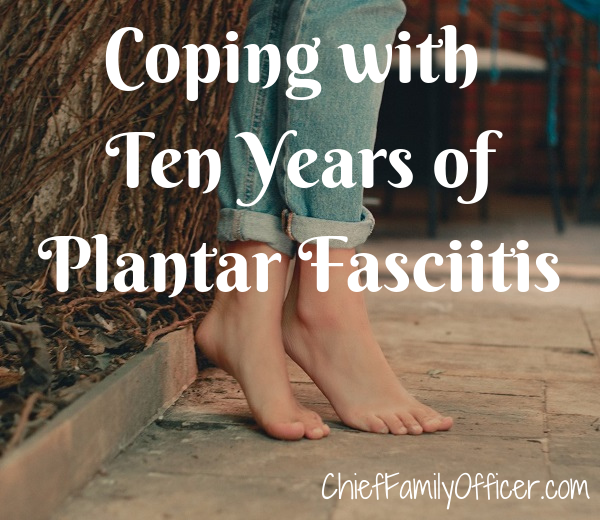For me, it all started when I was training for a 5K and ran too much. I developed the typical symptoms: pain in the heels, and trouble walking first thing in the morning.
Getting out of that state to my current state took some time. I went to physical therapy and learned how to stretch my feet and calf muscles. I got orthotics and wore tennis shoes instead of cute sandals. I also slept with a boot that kept my foot flexed so the muscles wouldn’t be so tight in the morning. (I have the condition in both feet but one has always been worse than the other.)
It took about a year, maybe two, before I really felt ok. I still had plantar fasciitis but I no longer gave serious consideration to trying a cortisone shot or, if that didn’t work, surgery.
The keys to getting to that point were lots of stretching and a willingness to change shoes. (I'll never be able to buy a pair of shoes just because they're super cute. *sniff*)

For the last seven or eight years, I’ve been in a maintenance mode - the plantar fasciitis isn’t completely gone, but I can keep it at bay and live a fairly normal life. Here are my secrets (with the usual disclaimer that I'm not a doctor and have no medical expertise):
- Stretch every day. It doesn't have to be a lot of stretching, but some stretching every day makes a huge difference.
- Wear the right shoes. It turns out my arches need help, so shoes with high built-in arches are now a must. Once I knew that, I was able to wear sandals and even heels again. My favorite brands are Abeo and Vionic. I think Abeo fits my feet a little better, but Vionics are usually lighter. And I like being able to choose from the biggest selection of styles. These shoes sometimes cost more than double what my old sandals used to cost, but they do last a long time and are well worth the price. What works for me may not work for you, however, so it makes sense to see a doctor or physical therapist to ask what you should look for in a shoe.
- Use orthotics as necessary. I’ve paid for custom orthotics, and they’ve been fantastic in sneakers - I can walk several miles without any pain. For off-the-shelf inserts, I’ve had multiple doctors and physical therapists recommend Superfeet (I go for the green ones). There are custom and OTC orthotics that are designed for flats and pumps, but they've never worked for me, which is a big reason why the expensive sandals and heels are worth it.
- Don’t overdo it. If you feel your muscles getting tighter, or if you think the pain might be coming back, take a break. (And stretch!)
- I’m sure losing weight would help me, but that’s a battle I’ve been fighting for decades so it would be a case of "do as I say and not as I do."
That was when I realized I'd been walking a lot on the treadmill, but not properly. A couple of years ago, I did some sessions with a woman who specializes in the Franklin Method, Pilates, and Yamuna rolling. The most important thing I got out of that time was how to walk properly - the heel comes down first, with the toes rolling down from the outside in. As soon as I started focusing on my walking form, the pain in my calf receded.
I hope this helps someone, even if it's just to know you're not alone!
This post contains affiliate links that help support this site at no additional cost to you. Thank you for using them! You can read CFO's full disclosure here.




No comments:
Post a Comment